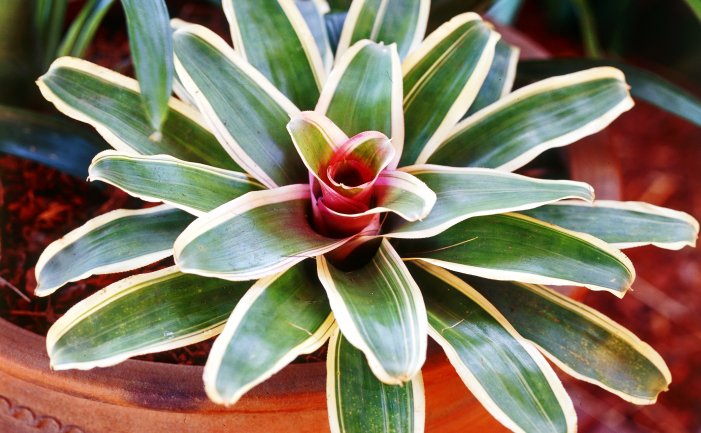They are among the basal families within the Poales and are the only family within the order that has septal nectaries and inferior ovaries. These inferior ovaries characterize the Bromelioideae, a subfamily of the Bromeliaceae.

The unusual appearance of the bromeliad would seem to indicate that the plant is high maintenance and requires special gardening skills. The plant is prized for its thick foliage that grows in a natural rosette. Near the end of its life, a bromeliad plant may produce an inflorescence or flower whose form and color vary widely among each variety. The wide leaves are sword shaped or scoop-like and grow around a central “cup.” This cup catches water in the plant’s habitat.
How To Grow Bromelaid
These plants are widely available at nurseries and garden centers. The plants need medium to bright light as indoor specimens. New gardeners learning how to grow bromeliads will find that the plant doesn’t need deep pots or thick potting soils. They do even better in shallow pots and may grow in low soil mediums such as orchid mix, a blend of bark, sphagnum moss and other organic amendments.
How To Take Care Of Bromelaid
Feed the plants with a half strength fertilizer every month in the growing season.Water needs are easily achieved by filling the cup at the base of the leaves. The water that collects in the pot should be emptied out weekly to remove debris and the dead insects the stagnant water tends to lure into the cup. Set the pot in a saucer of gravel filled partially with water to increase humidity and help provide a moist atmosphere. Make sure the roots are not submerged in the water or this might invite rot.

